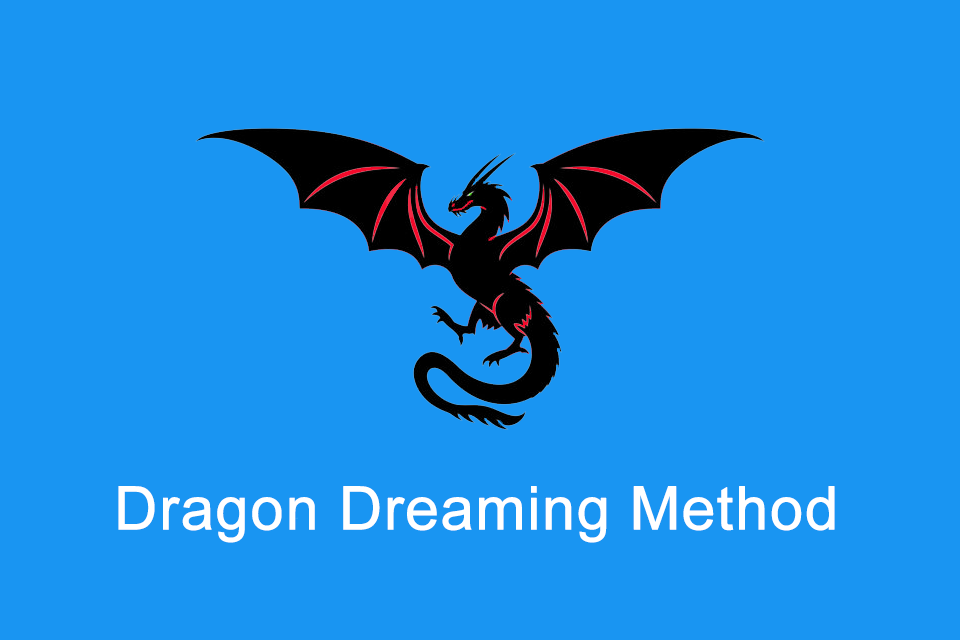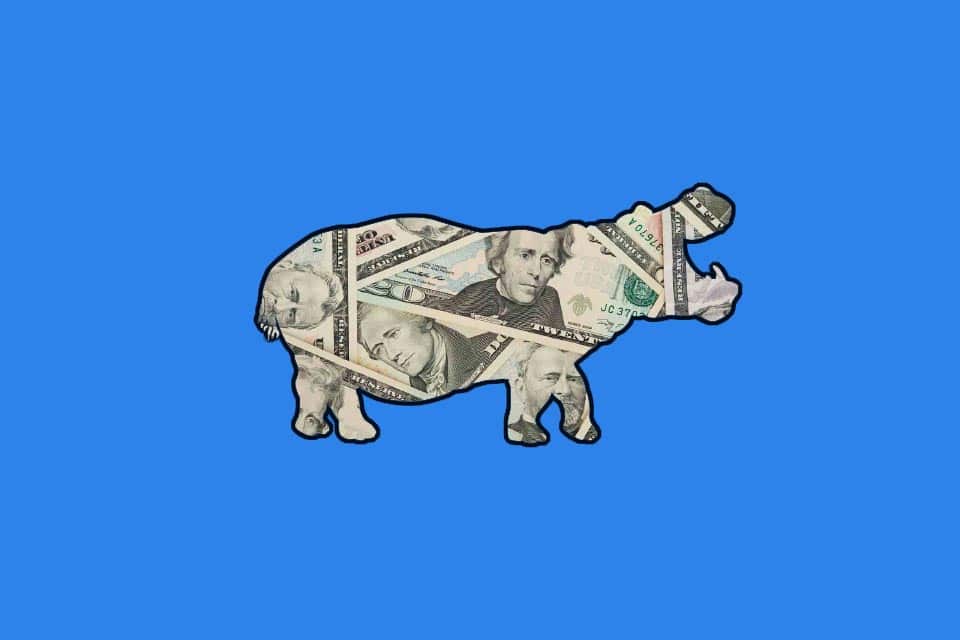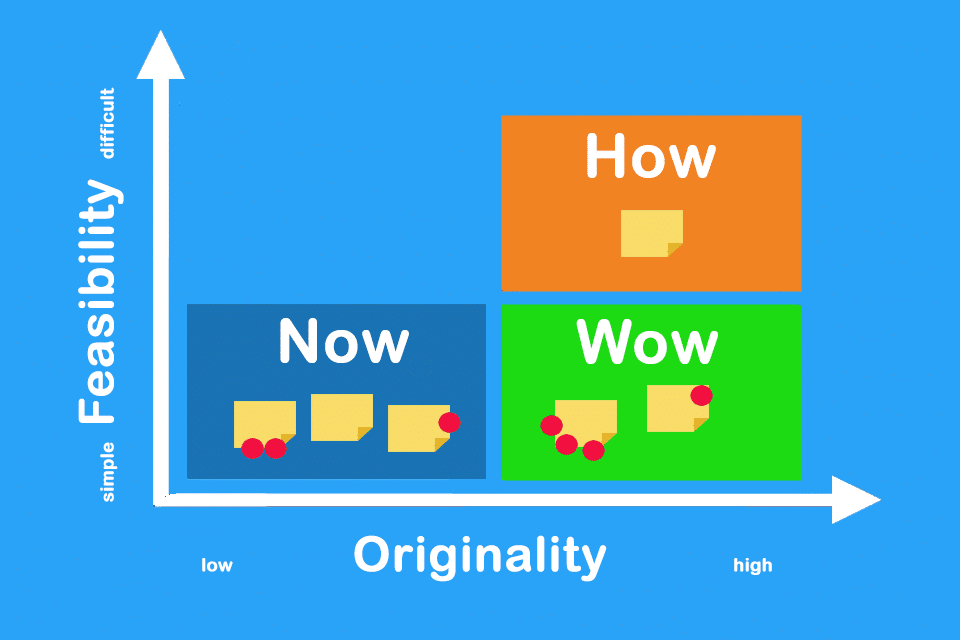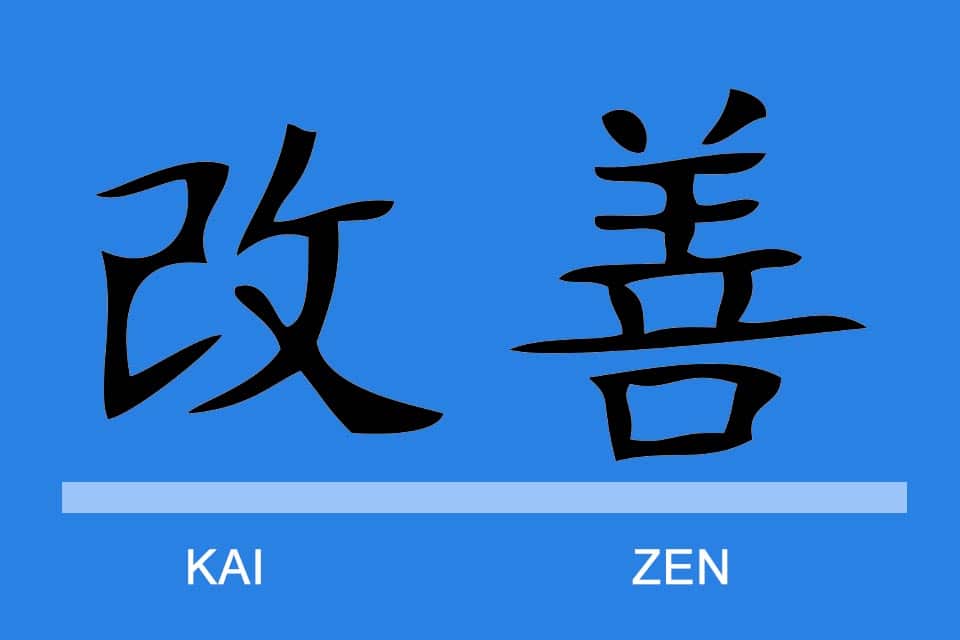What is the Dragon Dreaming Method?
Smartpedia: The Dragon Dreaming Method is an approach to achieving social and environmental goals with a focus on sustainability and creativity.
Dragon Dreaming Method – the emphasis on sustainability in project management
The Dragon Dreaming Method is a project management approach developed in Australia in the 1990s by John Croft, his wife Vivienne Elanta and their team.¹ It is inspired by Aboriginal wisdom and draws on systems thinking, deep ecology and participatory methods.
The Dragon Dreaming method aims to create sustainable projects based on shared values, collaboration and creativity. It comprises four phases: dreaming, planning, doing and celebrating.
Dreaming: This phase is about creating a vision for the project and putting together a core group of people who will work on it.
Planning: In this phase, the project team develops a detailed plan to realise the project vision, including defining goals, identifying stakeholders and determining the resources needed.
Doing: This phase is about implementing the project vision: This phase is about implementing the plan, i.e. monitoring progress, adapting to changes and celebrating successes.
Celebrating: This phase is about reflecting on the successes and failures of the project, learning lessons and planning future projects.
The Dragon Dreaming Method emphasises the importance of building strong relationships between the members of the project team, the stakeholders and the community in which the project is carried out. It also promotes sustainability by encouraging the use of renewable resources and minimising waste. Overall, it is a holistic and participatory approach to project management that aims to achieve positive outcomes for both the project team and the wider community.
Philosophy and principles of the Dragon Dreaming Method
At its core, the philosophy behind the Dragon Dreaming Method is based on the belief that we are all interconnected and that our actions can have a positive or negative impact on the world around us.
The method is based on four principles:
Personal growth: the Dragon Dreaming Method aims to help project team members develop their personal skills and abilities, which in turn can lead to better collaboration and innovation.
Community building: The method emphasises the importance of building strong relationships between project team members, stakeholders and the wider community. By working together, people can achieve more than they could on their own.
Empowerment: It is also important to empower project team members to take responsibility for the project and make decisions that are in line with their values and beliefs.
Sustainability: The method promotes sustainability by encouraging the use of renewable resources, minimising waste and considering the long-term impact of the project on the environment and the community.
Overall, the philosophy behind the Dragon Dreaming Method is one of holistic, collaborative and sustainable project management. It recognises the importance of working with, rather than against, nature and creating projects that benefit both the project team and the wider community.
What does the dragon stand for in the Dragon Dreaming Method?
In the Dragon Dreaming Method, the dragon represents a powerful and transformative force that can help bring about positive change in the world. The dragon is a symbol of energy, creativity and courage and is seen as a strong source of inspiration for the project team.
The dragon is also seen as the guardian of the project vision and helps to protect it from external and internal challenges. It is seen as a protector of the project team, supporting them in difficult times and giving them the energy and motivation to carry on.
In addition, the dragon is a symbol of the interdependence of all things. It reminds the project team members that they are not working in isolation but are part of a larger ecosystem of relationships and systems. The power of the dragon comes from its ability to connect and integrate different parts of the project, creating a sense of wholeness and coherence.
In addition, the dragon can also be seen as a symbol of the challenges, fears and obstacles that the project team members may face during the life cycle of the project. The dragon represents the “shadow side” of the project, i.e. everything that could jeopardise the success of the project.
By recognising and addressing these challenges, project team members can work to overcome them and create a more resilient and sustainable project. The method encourages project teams to see these challenges as opportunities for growth and transformation, rather than obstacles to be avoided or feared.
In this way, the dragon can also stand for the people in our lives who face challenges and obstacles, such as marginalised or disadvantaged communities. The Dragon Dreaming Method emphasises the importance of building close relationships with these communities and working together for positive change.
Overall, the dragon represents a powerful and positive energy that can help project team members overcome obstacles and achieve their goals. It reminds us that we are all connected and that our actions can have a positive impact on the world around us.
The phases of the Dragon Dreaming Method in detail
Dreaming, planning, doing and celebrating – these are the four phases of the method. What exactly happens in each phase?
The deaming phase is about developing new ideas (on a topic) and imagining the ideal future state. The focus of the phase is on developing new ideas and exploring possibilities, not on assessing feasibility or practicability.
- To develop new and innovative ideas, it is important to approach the dreaming phase with an open and curious mind. It is about letting go of preconceived ideas and being open to new possibilities, even if they seem unusual or unconventional.
- If a person has a dream, the question is with whom they want to realise it. For implementation, it is not only important to bring people with defined skills and knowledge into the project, but also people with whom one wants to actively collaborate. In short, it is about putting together a dream team.
- This is followed by an invitation to a dream circle. The aim here is to turn an individual dream into a collective dream of the group, and then to pursue this dream together with a lot of energy.
- Although it is also important to develop many ideas in the dreaming phase, it is equally important to use the vision and the mission of the project as orientation and accordingly also to put them in the foreground.
In the planning phase of the Dragon Dreaming Method, the roadmap for the project is set, which provides the framework for the implementation phase:
- First, ideas should be collected, grouped thematically, sub-goals set, an overall goal developed and tasks derived.
- The most important step in the planning phase is to create a game plan: the so-called Karabirrdt. This is a spider’s web diagram (“kara” is an Aboriginal word for spider, and “birrdt” the word for web). It begins a playful process of creating a project plan, assigning tasks to their respective phases and connecting them by lines – called songlines – to get from the start to the finish.
- Then it is a matter of defining tasks and responsibilities, but the allocation is not based on the qualifications of the employees, but rather employees take responsibility for tasks for which they feel the most enthusiasm. Of course, efforts, milestones, contributors, budgets, etc. must also be defined.
- Last but not least, the actual commitment of those involved must be checked before the project can be implemented.
In the doing phase, the project plan is put into action and the project team works to achieve the project goals. Here are some additional insights that can help you get the most out of this phase:
- Communication and collaboration are important in the Doing phase to keep the project on track so that team members can act in alignment with each other. Make sure that team members communicate regularly, share progress and work together to achieve the project goals.
- The doing phase is an opportunity to encourage creativity and innovation and to find new and more efficient ways to achieve the project goals. Encourage team members to think outside the box and explore new approaches to achieving project goals.
- Celebrating milestones and successes during the doing phase can help boost morale and maintain momentum. Take time to acknowledge team members’ contributions, recognise their achievements and celebrate project milestones.
- A positive and supportive team culture is essential in the doing phase to ensure that team members are motivated and engaged. Ensure that the team culture is inclusive, respectful and collaborative and that team members feel supported and valued.
The celebration phase is the final phase of the Dragon Dreaming Method and is an opportunity for the project team to reflect on the shared dream, the project for realisation and the corresponding project outcomes. The following points are recommended:
- Analysing the strengths and weaknesses of the project, identifying areas for improvement and gaining insights to optimise future project planning.
- Acknowledging the contributions of team members, recognising efforts made and giving sincere thanks to all involved.
In practice, it has worked well to complete the project together, celebrating the success of the project as a team, making sure that everyone involved feels included and valued.
Sustainability and creativity in the method
The Dragon Dreaming Method explicitly promotes sustainability as a key objective throughout the project design and management process. Sustainability is a core value and principle of the method. Users are encouraged, for example, to consider the environmental, social and economic impacts of their project and to develop strategies to minimise negative impacts and maximise positive ones. The aim is to develop ideas that are socially and environmentally responsible and take into account the needs and interests of all stakeholders, including future generations.
Similarly, in the planning phase, participants are encouraged to develop a detailed project plan that includes strategies to minimise environmental impacts, such as waste reduction, energy conservation and use of sustainable materials. The method also emphasises the importance of social sustainability, e.g. promoting cultural diversity and social justice, and economic sustainability, e.g. creating a financially viable and sustainable project.
In the Doing phase, participants are encouraged to implement the project in a way that is collaborative, inclusive and socially responsible. This includes working with local communities, engaging stakeholders and using sustainable and environmentally friendly practices.
Finally, in the celebration phase, participants reflect on the project and its outcomes, celebrate the successes and identify areas for improvement. The focus is on continuous learning and improvement, and on creating a sense of community and shared responsibility among all participants. In this way, the Dragon Dreaming Method promotes sustainability as a core value throughout the project planning and management process.
And how does the method promote creativity?
The method is designed to foster an environment of collaboration, innovation and experimentation that encourages participants to think creatively and think outside the box. In the Dreaming phase, the focus is on developing innovative and unconventional ideas that challenge conventional thinking and encourage creative solutions to problems. In addition, the method encourages participants to use stories and metaphors to communicate their ideas and connect with others on a deeper level. Storytelling can be a powerful tool to stimulate creativity and generate new ideas as it allows participants to use their imagination and think more freely and creatively.
Dragon Dreaming also promotes creativity by encouraging participants to experiment and take risks. The method emphasises the importance of trial and error and learning from mistakes and encourages participants to take calculated risks and try new things. This creates a culture of innovation and experimentation that can lead to new and creative solutions to problems.
Finally, the Dragon Dreaming Method promotes creativity through its emphasis on collaboration and teamwork. The method encourages participants to work together and build on the ideas of others, creating a synergy effect that can lead to even more creative solutions. By encouraging collaboration, the method creates a supportive environment that fosters creativity and innovation.
Criticism of the Dragon Dreaming Method
The Dragon Dreaming Method focuses on collaboration, creativity and sustainability. While it has gained popularity in certain circles, there are also critics who raise various concerns about the method. Among the criticisms of the method are:
- There is not enough empirical evidence to support the effectiveness of the method. There are case studies and anecdotal evidence, but without more rigorous research, the effectiveness of the approach cannot be proven.
- The method places a strong emphasis on group consensus, which can sometimes lead to paralysis in decision-making or diluted results. In addition, the method does not provide a sufficiently clear framework for resolving conflicts or making difficult decisions.
- The emphasis on collaboration and creativity can lead to unrealistic expectations or unworkable project ideas. Critics believe that the method should be more focused on practicality and feasibility.
- The method is relatively complex and difficult to implement. It requires a lot of time and resources to implement and is also not suitable for all types of projects or organisations.
Despite these criticisms, the Dragon Dreaming Method is also praised for its focus on sustainability, community engagement and creativity. As with any project management approach, the effectiveness of the method is likely to depend on the specific context and the skills of those involved.
Download the Ideation Whitepaper for free now.
Everything important about Ideation at a glance.
- Definition and tips from practice
- Idea evaluation
- Methods such as reverse and round robin brainstorming, headstand technique, scamper, starbursting, brainwriting, brain dumping, Osborn checklist or 1-2-4-All in detail
Knowledge on 17 pages to take away.
How important is it that the participants of a dream circle know that the phenomenon of groupthink exists?
Notes:
If you like the article or would like to discuss it, please feel free to share it in your network. And if you have any comments, please do not hesitate to send us a message.
[1] John Croft: Dragon Dreaming
Here you will find a very readable eBook on Dragon Dreaming.
And here you will find additional information from our Smartpedia section:




